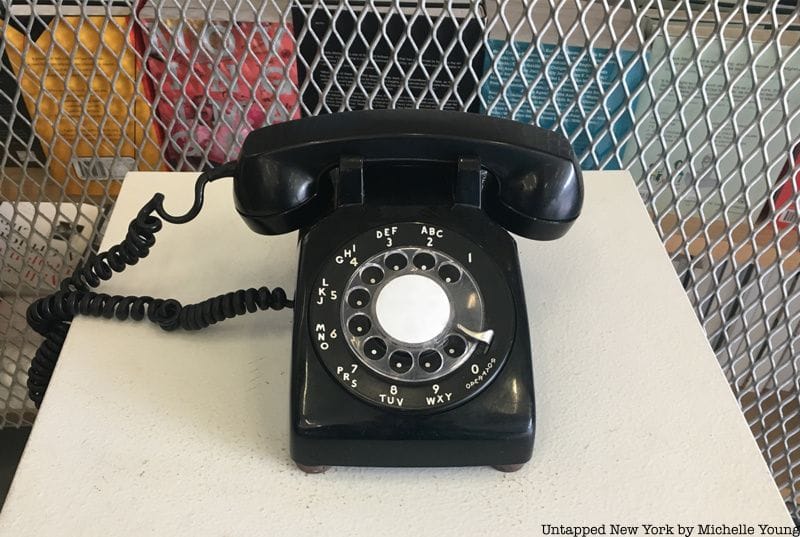How to See the Liberty Bell...in Queens
A copy of the famous American bell can be found inside a bank, which itself is modeled after Independence Hall!

A number with a 212 NYC area code is a badge of honor that bestows “old New York” authenticity. But why were those three numbers chosen?

Between 929, 718, 646, and half a dozen more triple-digit arrangements, New York City is a thicket of area codes. They abut, interlock, and overlap to the general confusion of callers and caller ID interpreters. But New Yorkers of a certain age will remember the halcyon days when one area code—the good ol’ 212 area code— spanned the five boroughs. Today, a number beginning with 212 is seen as a badge of honor and a certificate of “old New York” authenticity. But just what is the origin of these humble digits and what precipitated the balkanization of the Big Apple’s phone lines?
Perhaps unsurprisingly, the genesis of the 212 — and area codes altogether, actually — lies with a familiar name: AT&T. In 1947, the telecom giant and a conglomerate led by Bell Telephone divvied up the United States and Canada into 86 original area codes, including the 212. The move set the stage for phone calling as we know it today, ushering in what’s known as direct distance dialing in favor of the old, operator-connected system.
The North American Numbering Plan (NANP) followed a certain logic. No area code could begin with 0 or 1 for fear of confusing switching equipment prone to ignoring leading 1’s and interpreting 0’s as operator requests. However, the second digit of each of the original 86 area codes was one of those two digits, with 0’s marking codes that covered entire states or provinces and 1’s for those holding down regions within a larger entity.

Old dial phones made “212” an obvious choice for an area code. “The higher the number, the longer it took for the phone to register what number was being dialed, so the logical way to assign codes was to give the lowest numbers to the most-used numbers,” Untapped New York reader Jay Klotz explains. “Since New York was the largest city with the most people and businesses, it got the lowest possible number, 212 (five clicks of the dial). The next two cities, Chicago and Los Angeles, got the next lowest possible numbers, 312 and 213, respectively (six clicks of the dial).”
That was all well and good until the mid-1980s when New York’s population began to outstrip the reservoir of available phone numbers. Despite the protestations of some residents and local lawmakers, the New York Public Service Commission handed down a new area code to Brooklyn, Queens, and Staten Island effective September 1st, 1984. Newly minted residents of the 718 had a short grace period during which both codes could be dialed, but by 1985, the 212 was the exclusive pride of the Bronx and Manhattan.
A New York Times headline from August 31st, 1984 sums up the general ambivalence towards the change: “LIKE IT OR NOT, CITY GETS 2ND AREA CODE TODAY.” The Newspaper of Record goes on to say that “the impending change has brought confusion and anger” to bridge-and-tunnel communities and “confirmed yet again some ancient and deep-seated strains of outer-borough paranoia.”
The Times article also includes a city councilwoman’s suspicion that the Bronx, too, would soon be shunted into the pool of “unfashionable” secondary codes. A prophetic suspicion, it turned out, as the Bronx was annexed to 718 territory in 1992.
In the interim years, the city has been further partitioned and overlaid with more NYC area codes as demand for cell service joined that of traditional landlines. The most recent one, 332, was added in 2017. With each added area code, the prestige of the 212 reaches new heights, its OG status burnished by every latecomer.
Even though each new area code effectively doubles the number of available phone numbers, New York City will soon need another one. In January 2025, The New York State Public Service Commission (Commission) approved a petition from the North American Numbering Plan Administrator (NANPA) to add an all-services area code overlay which will make more numbers available in the current zones that fall under 347, 718, 917 and 929 New York City area codes. Those numbers cover the Bronx, Brooklyn, Queens, Staten Island, and the Marble Hill sections of New York City.
According to a statement from the Public Service Commission, "an overlay occurs when a new area code is superimposed over an existing calling area, and, by definition, it results in more than one area code serving the same calling area or region." Existing phone numbers will remain unchanged while all new numbers will have the new area code once all 347, 718, 917, and 929 numbers run out.
The NANPA puts in a request for a new area code when existing codes are expected to run out within a three-year period. NANPA will pick the three digits for the new code which has not yet been released as of this publication.
Presumably, the new NYC area code will push the going rate for a coveted 212 number, especially valuable for businesses wanting to connote deep New York roots. Through one online phone number broker, 212areacode.com, rates start at $150 for a random number and reach up to $4,000 for a custom one! If money can’t buy happiness, at least it can buy you bragging rights in New York City.
Additional reporting by Nicole Saraniero
Subscribe to our newsletter